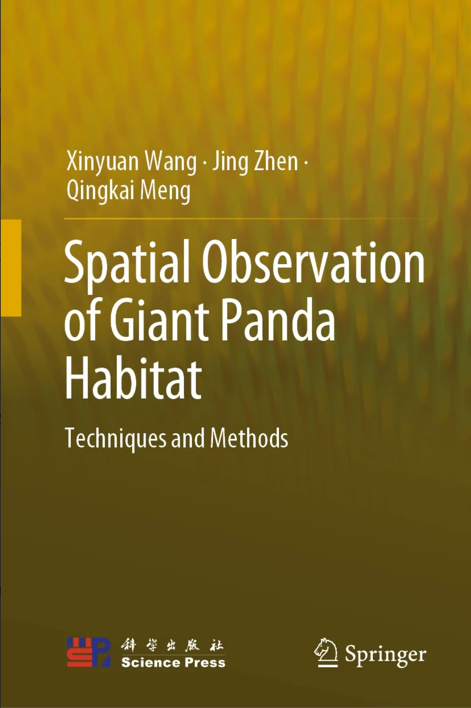Spatial Observation Sheds Light on Sustainable Development of Giant Panda Habitat
Jun 09, 2023
A new book “Spatial Observation of Giant Panda Habitat: Techniques and Methods” jointly published by the Science Press and Springer Publishing Company tells how space technologies can be used to monitor the habitat of giant pandas, and to facilitate the sustainable development of natural heritage sites.
This book evaluates the past, present, and future habitat suitability of giant pandas based on spatial observation technology involving optical remote sensing, microwave remote sensing, and LiDAR to discover the ecological environment of giant panda habitat.
“Sichuan Giant Panda Sanctuaries”- Wolong, Mount Siguniang and Jiajin Mountains, home to more than 30 percent of the world's giant pandas, covers 924,500 hectares with seven nature reserves and nine scenic parks. The sanctuaries constitute the largest remaining contiguous habitat of the giant panda, which is recognized as a “national treasure” of China and is a flagship for global conservation efforts.
Focusing on the region, this book exemplifies various techniques and methodologies of spatial information technology for monitoring, evaluation, and prediction of rare and endangered species habitats.
The book also provides scientific suggestions for sustainable development of giant panda habitat based on a series of comprehensive case analysis at Wolong national nature reserve and Ya'an prefecture, Sichuan province, China.
The book can be served as a textbook in the field of natural heritage protection, remote sensing, and GIS application, as well as a reference for managing natural heritage sites.
The three authors of the book are Prof. WANG Xinyuan and Dr. ZHEN Jing from the Aerospace Information Research Institute (AIR), Chinese Academy of Sciences (CAS), together with MENG Qingkai from the Institute of Mountain Hazards and Environment (IMHE), CAS.

Cover of the book. (Image by AIR)



News & Events